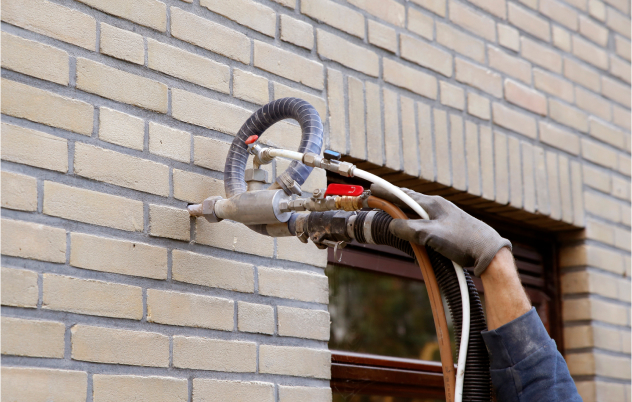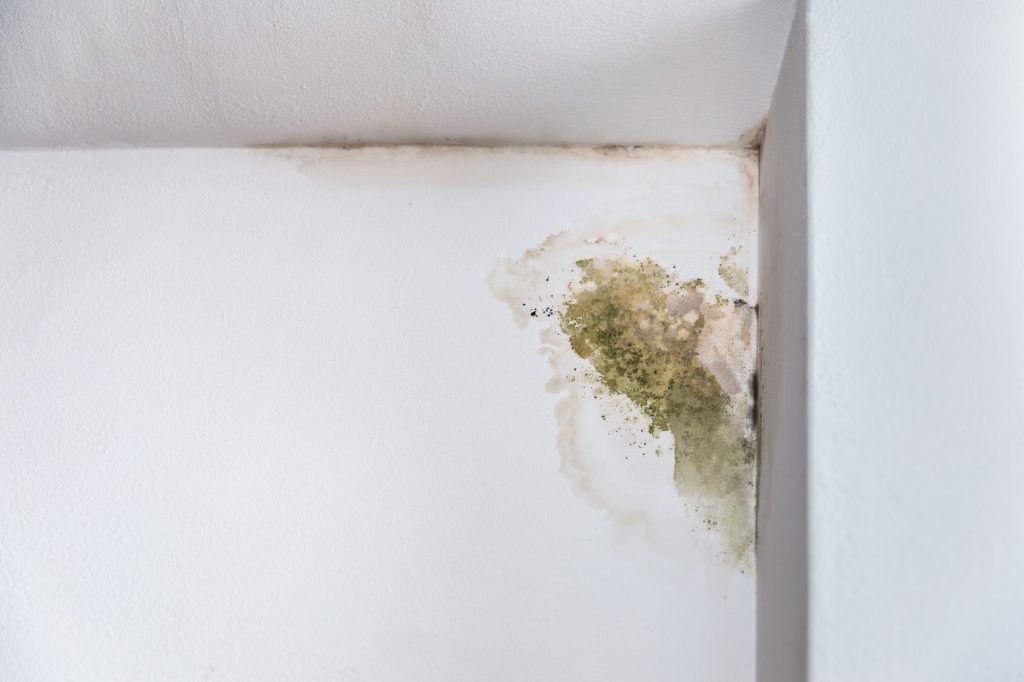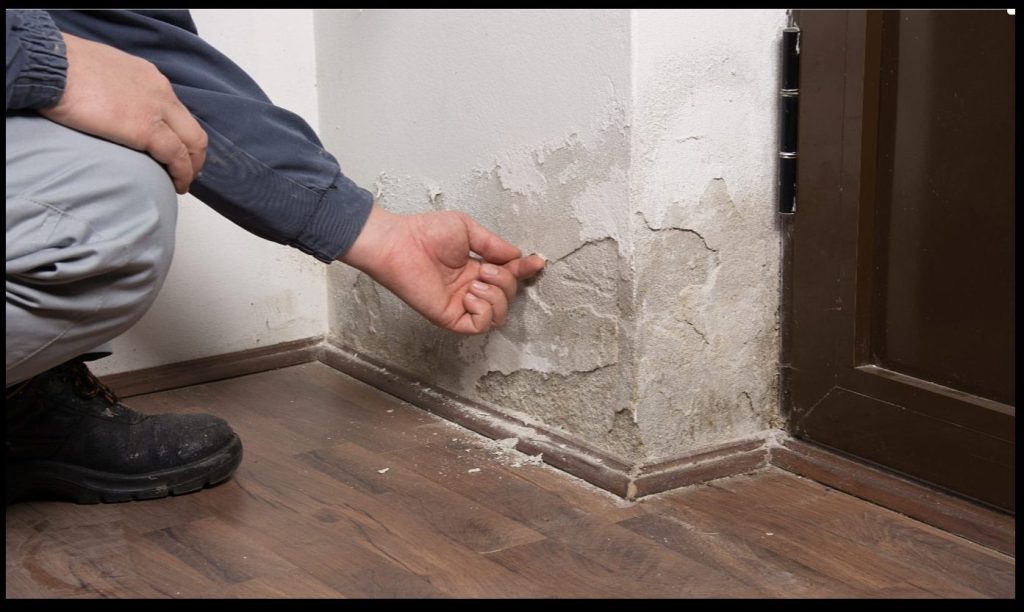Damp
Damp can be damaging to both our homes and our health.

In this article, we’ll look at the different kinds of damp, and how to avoid or treat them.
If you rent your home from a housing association, local council, or private landlord, then it’s your landlord’s responsibility to fix problems with rising damp or penetrating damp. This is part of keeping your home to a legal standard of repair. You should report any issues as soon as possible. You can find out more on Shelter’s website.
What is damp?
“Damp” means that there’s too much moisture present.
When we talk about damp in the home, we usually mean there’s too much moisture in a particular room. The “moisture” in this case is water.
Although damp means too much water, we’re still only talking about a relatively small amount. A damp-problem is very different to leaking or flooding. Signs of dampness in the house would mean a surface is wet to the touch. If water is running down the surface, or has pooled on top of it, you’re likely to be dealing with a flood or leak.
Different kinds of damp
There are three main kinds of damp:
- Condensation
- Penetrating damp
- Rising damp
Condensation happens when water vapour in the air “condenses” (turns into) water droplets on a surface. We’ve written a separate condensation guide which you can check out here.
Penetrating damp is water leaking through your walls.
Rising damp is water in or on the ground moving upwards through a wall.
Penetrating damp
With penetrating damp, water from outside leaks into your home through your walls. This usually happens if there’s damage to your outer walls, gutters, or roof.

On interior walls, the signs of penetrating damp are:
- Damp patches
- Black mould
- Wet rot (on wooden surfaces such as skirting boards)
- Peeling wallpaper
Unlike rising damp (see below) the mould and damp patches will be more than a meter above the ground.
On exterior walls, you might see:
- Moss and algae
- Damp patches
- Damaged bricks
Fixing the damage or fault outside your home should stop the penetrating damp-problem.
If your gutters are blocked or damaged, try cleaning them or repairing them.
If you notice any sign of rot on the outside of your home, speak to a specialist for advice. You’ll need to look out for both wet rot and dry rot. Wet rot usually affects wood. The wood itself will be damp and possibly stained black. Dry rot affects other materials, as well as wood. You might spot a white or orange fungus growing on the surface.
If there are any cracks or damage to the exterior of your home, seek help from a specialist.
On your roof, look for damaged “flashing” or “pointing”. “Flashing” is a waterproof layer covering any joints or seams on your roof. The most common flashing area is where the chimney meets the roof. “Pointing” on a roof is the mortar between the roof tiles. Repairing any flashing and pointing should fix the damp issue.
The bricks of your home’s outer walls might have become too porous over time. This means they let a lot of water travel through them. To treat this, you can use water-resistant paints and creams. It’s best to speak to a professional first, to see what they would recommend.
Rising damp
Rising damp is groundwater that’s drawn upwards through a wall or floor. To stop this, modern homes have a Damp-Proof Course (DPC) and Damp-Proof Membrane (DPM). The DPC and DPM create a barrier that water can’t pass through. They’re installed near the bottom of a property, so water won’t rise very far.

On external walls you might see:
- Salt on the surface of the bricks or stone – known as “efflorescence”
- Staining of the bricks or stone (often a greenish-brown colour)
- Crumbling or flaking of bricks or stone
On internal walls you might see:
- Salt (efflorescence)
- Damp patches
- Blistering or flaking plaster
- A tide mark about one meter up the wall
Rising damp is usually treated by fixing (or putting in) a Damp-Proof Course (DPC) and Damp-Proof Membrane (DPM). This can be done by either:
- Injecting a damp-proofing cream
- Installing damp-proofing rods
Rising damp might also be fixed by installing venting bricks.
In some cases, there may be no issue with the DPC or DMC. If there have been changes to the ground outside your home, the DPC might be below ground level. The DPC needs to be 15cm above ground level. In this case, you would need to dig down until the DPC is at the right height.
Useful pages
Is this page useful?